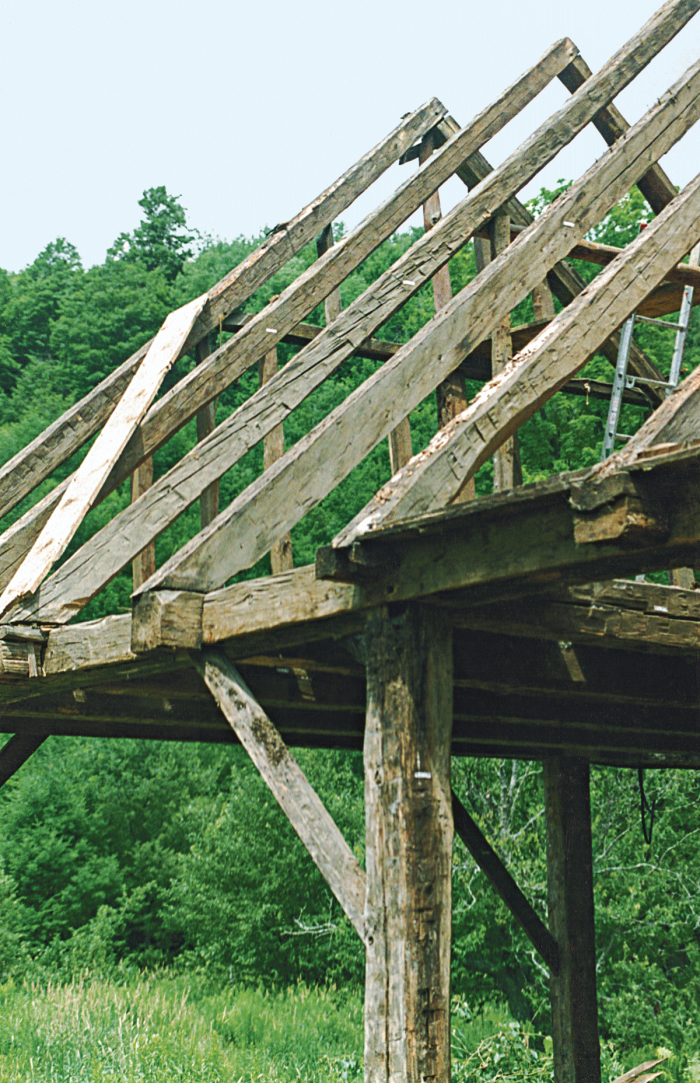Early New England Post-and-Beam Construction
Vermont settlers trying to get a roof up before winter built spare, but with great integrity.

As a young man, Gregory Schipa apprenticed with master craftsmen, restoring historic houses in Nantucket. To date, he and his wife Carolynn, principals of the Weather Hill Company in Warren, Vermont, have completed more than 200 major restorations of period homes, inns, farms, and the like. Here’s Greg’s take on an old beauty he found slumbering on the edge of a meadow more than 40 years ago:
“This is a very early frame in beech—not pine—as the earliest frames were hardwood. A house this primitive in Nantucket might date to 1750, but because Vermont was wild, remote, and less sophisticated architecturally, this one was probably built around 1790. All of its rafters were hand-hewn, and there’s no ridge beam because early builders raised one pair of rafters at a time. There’s not an ounce of fat on it: Hand-hewn 8×8 floor joists ran the width of the frame, holding in top plates and doubling as collar ties. So the rafters stayed up and the ridge stayed straight for two centuries. Throughout, the joinery was tight: rafters met in full lap joints and were pegged, floor joists were half-lapped to top plates, the rafters sat atop the ends of floor joists—which doubled as cornice blocks. These were simple people trying to get a roof over their heads before winter hit, so they built spare, but with great integrity.”
This blog was adapted from Renovation 5th Edition (Taunton, 2019). A hefty 656 pages, R5 is a trove of pro tips and techniques that builders shared with me over four decades, plus roughly 1000 photos taken on job sites across North America. I hope you find it useful. – Mike
Fine Homebuilding Recommended Products
Fine Homebuilding receives a commission for items purchased through links on this site, including Amazon Associates and other affiliate advertising programs.

Pretty Good House

A Field Guide to American Houses

The New Carbon Architecture: Building to Cool the Climate





























